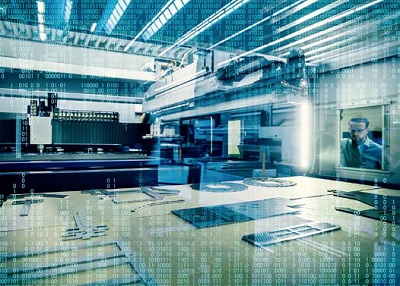
“As they become increasingly autonomous, our machines are taking on more tasks and making life easier for the people who work with them. But you can only unlock these benefits with a connected, intelligent production environment. That's what enables us to achieve productivity gains and secure our customers' competitive edge – and artificial intelligence is the key,” says Heinz-Jürgen Prokop, Chief Executive Officer Machine Tools at TRUMPF.
Prokop notes that there is now little to be gained by striving for ever higher laser power. Instead, the focus should be on connected machines and the processes that occur upstream and downstream from the actual production process. Combined with intelligent data analysis, he argues that this is where the biggest productivity gains can be achieved.
Assistance systems makes processes more reliable
The company has already laid the foundations for the autonomous factory by including numerous assistance systems in its machines. One example that makes cutting processes more reliable is Smart Collision Prevention. This function’s programming already takes account of tilting parts and then develops a processing strategy in its calculations to avoid collisions with the cutting head. More and more machine functions now control processes autonomously. One example is Smart Nozzle Automation, a function that periodically inspects the nozzle and automatically replaces it if it is damaged.
Self-learning machines
The fully automatic TruLaser Center 7030 laser system takes the whole concept of autonomous machines to the next level. From programming to part sorting, everything it does is completely automated.
“We’ve already started using intelligent data analysis to improve the processes executed by this machine. By incorporating customer feedback in the form of data, our aim is to steadily perfect the entire system. Artificial intelligence is the next stage of Industry 4.0,” says Thomas Schneider, who heads up machine tool development at TRUMPF.
A good example is the machine's unloading unit. The pins that lift the sheet out of the scrap skeleton are designed to ensure efficient and reliable part removal using suction cups. If the pins fail to get it right the first time around, the machine initiates a new part removal cycle on its own, without requiring any intervention. It then repeats this cycle as many times as necessary until it works. The machine processes and assimilates each of these retry attempts and learns from them.
Smart factory, intelligent logistics
A connected intra-logistics solution is something that TRUMPF has already tested successfully at its Industry 4.0 showcase factory and at selected customer locations. The solution improves the logistics processes that run on the shop floor, for example the routing of parts from one processing station to the next.
“Customers participating in our product testing program have sometimes made five-figure savings by deploying our indoor localisation system,” says Schneider. “It enables them to reduce search times and prioritise jobs in an intelligent fashion,” he adds.
This is steadily becoming more important because batch sizes are shrinking and sheet metal fabricators are increasingly struggling to keep track of jobs throughout the entire production process. At the same time, the sheet metal fabricators’ customers want to know what stage their order has reached – a level of transparency they have come to expect from doing business online. The indoor localisation system enables TRUMPF customers to manage their production processes more efficiently and satisfy their own customers’ expectations.
Nike













